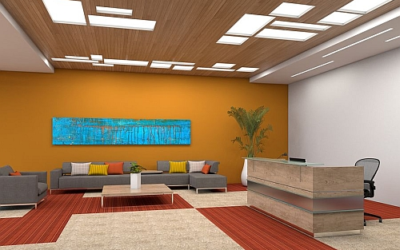Innovations in LED lighting technology have led to tremendous adoption rates and vastly improved the metrics by which they are traditionally evaluated–including color quality, longevity, and energy...
Human Lighting
The latest research, articles, and discussions on the impact and innovations of biological light for humans.
Melanopic Equivalent Daylight Illuminance
Image Credit:wikimedia Melanopic EDI or m-EDI for short is the circadian metric that has been adopted by the international commission on lighting (CIE). The CIE issued an international...
Spatial Distribution
Image Credit: Wikimedia Spatial distribution refers to the location from which light is delivered. For example: overhead (ceiling), at the taskplane (table lamp), or low level (pathway lighting or...
Spectral Engineering: Which Blue is Best?
The growing body of evidence showcasing physiological effects of light mediated by ipRGCs (intrinsically photosensitive retinal ganglion cells) has led to the emergence of spectral engineering to balance the desired visual and physiological effects of light, generally based on time of day (i.e. daytime spectrum and nighttime spectrum). However, end users and designers are left to decide what of this spectral engineering is worthwhile and what is marketing fluff. In order to truly find out, we must investigate the interaction between the visual sensitivities and the physiological sensitivity.
What is Sleep Chronotype and Social Jetlag?
Sleep is essential; we all know that. But not all sleep was created equal. In this video, Robert Soler delves into the primordial factors that shaped our sleep patterns for millenia, and the pressures and disconnects of contemporary life which lead to “social jet lag,” and deeper health issues like ADHD and Alzheimer’s disease.
What is Spatial Distribution?
Lighting design has always been about the strategic and aesthetic placement of light sources. As Robert Soler explains in this short video, biological elements are very important as well, particularly the placement of lights relative to the “horizon plane,” which determine whether light is coming from above or below one’s normal horizontal gaze.
What is Melanopsin?
In this two-and-a-half minute video, scientist Robert Soler explains how the photopigment, Melanopsin, functions to help our eyes see by integrating light over time.
Three Trends to Anticipate with Circadian Lighting
Public perceptions of circadian lighting—lighting based on our natural biology —have evolved considerably in the past year. In this article, light scientist Robert Soler writes that many people are starting to wake up to the health benefits of biologically-based lighting. Three trends stand out in recent studies: Reduced skepticism of the benefit of circadian lighting, the recognition of “social jet lag” (which afflicts 87% of the population), and a desire to prevent the domino effect of bad lighting practice by paying more attention to circadian options.
Prescription Lighting – Biological Lighting
This 24-minute video features Mariana Figueiro from the Lighting Research Center and Robert Soler offering their ideas about Prescription Lighting to Randy Reid of the EdisonReport. The panel discussion covers “prescriptive lighting” and the importance of the intensity of the light, the amount of light, how the light is distributed, when the exposure occurs, and “optic history,” an individual’s daily exposure to natural light.
Circadian Lighting – A Call to Arms
Over many millennia, peoples’ biological cycles have evolved and been closely intertwined with natural cycles of sunlight and darkness. Only in relatively recent times have technologies developed that interfere with these patterns, often with deleterious effects (up to 87% of workers suffer some kind of circadian disruption). In this article, light scientist Robert Soler explores important facets of light, the way that it affects us during the day, and how to calculate optimum levels related to both light spectrum and luminance.

